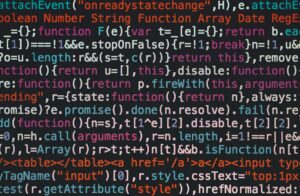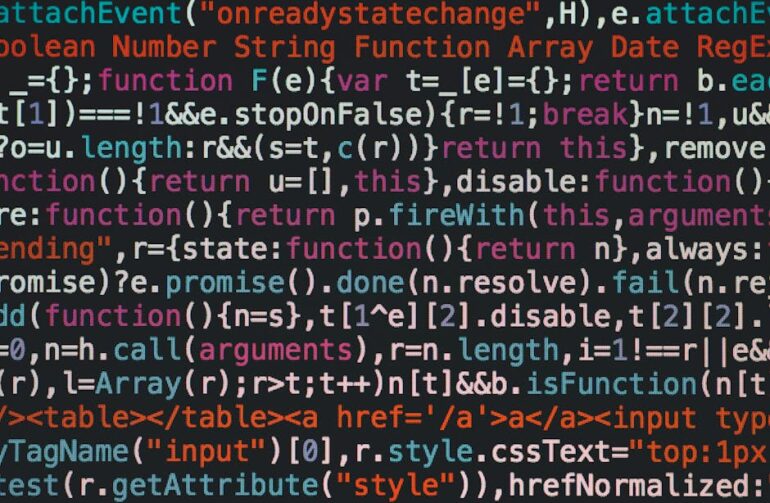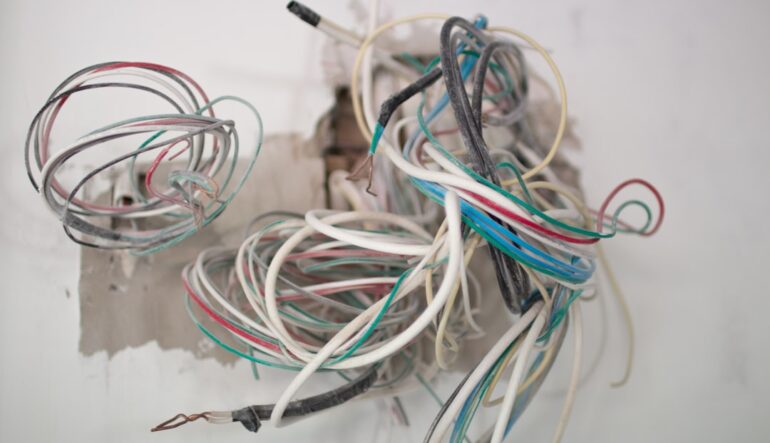
| Error Type | Numpy Installation Failure |
|---|---|
| Error Message | “Could Not Build Wheels For Numpy Which Use Pep 517 And Cannot Be Installed Directly” |
| Cause | PEP 517 Compliance Issue or Missing/Core Dependency |
| Common Solutions | Update pip, Install wheel and setuptools, Install build dependency before numpy |
Now, to provide more context, the aforementioned error while installing numpy is indeed fairly prevalent. Numpy is an indispensable library for Python programmers, particularly who are engaged in numerical computations. This error tends to emerge when attempting to compile the Numpy package from its source distribution.
The sentence “Could Not Build Wheels For Numpy Which Use PEP 517 And Cannot Be Installed Directly” indicates precisely an issue with your installation environment, which is having difficulty building wheels for libraries that require compliance with PEP 517. PEP 517 (Python Enhancement Proposal 517) is basically a specification that proposes a mechanism for Python packages to specify what should be used to recompile their extensions, instead of relying solely on setuptools.
The most common causes of the error are either using an outdated version of pip which lacks full PEP 517 support or missing a core dependency required by Numpy for installation. The solutions generally involve updating pip to a newer version which certifiedly supports PEP 517, ensuring that wheel and setuptools are installed as these are essential for the building process, or pre-emptying the installation of Numpy by first installing its build dependencies.
Here is a code snippet which shows some commands that can help get rid of the issue:
pip install --upgrade pip pip install wheel setuptools pip install Cython pip install numpy
These commands update pip, install wheel and setuptools, install Cython as a build dependency, and then proceed with the installation of numpy. These steps, when performed in the mentioned order, mostly steer clear of the error under discussion.
Yes, sure. Let’s get into the heart of the matter: the error “Could not build wheels for Numpy which use PEP 517 and cannot be installed directly”. These error messages usually appear while installing Numpy using pip. Before diving deeper, it is helpful to understand what PEP 517 does.
What’s PEP 517?
PEP 517 is a Python Enhancement Proposal (PEP) that defines a standardized method for packaging Python software. This simplifies the process of installing third-party Python libraries. Prior to PEP 517, library authors had to provide
wheel
files for every possible combination of platforms and python versions, or users would have to build their own from source files – a tedious process.
With PEP 517, library authors can provide a
pyproject.toml
file in their package, which pip can use to build the required
wheel
file on-the-fly during installation. This eliminates the need for each user to manually build numpy from the source.
The “Could not build wheels for Numpy” message occurs when there are some complications with this automatic building process, possibly due to problematic Python or pip versions, or missing dependencies.
Solutions
Let’s see how you can resolve these issues based on likely causes:
-
Case 1: Using An Old Python Version
Numpy might require a more recent version of Python than the one you’re using. As common practice always uses the latest stable release of Python.
# Updating python $ sudo apt-get install python3.8 -
Case 2: Old Pip Version
You might solve the problem by updating pip itself. Numpy and other packages updated their build process to conform to newer standards as set out by PEP 517. These can sometimes cause troubles with older versions of pip.
# Checking your pip version $ python3 -m pip --version # Installing a pip upgrade $ python3 -m pip install --upgrade pip -
Case 3: Missing Dependencies
Missing system-level libraries could be another possible reason. The build process of certain binary Python packages may require additional non-python libraries. In the case of Numpy, these are libraries used for numerical operations.
# On Linux, installing via package manager $ sudo apt-get install libatlas-base-dev
Remember, after applying these changes, try reinstalling Numpy again:
# Installing Numpy
$ python3 -m pip install numpy
I hope this breakdown of the ‘Could not build wheels for Numpy’ error message helps you overcome your installation problems. Do consult the official installation guide for more specific advice tailored to your particular setup.
PEP 517 introduces a standard approach for Python projects to specify how they should be built and installed, independent of the build system used. It introduces a more predictable and customizable mechanism for building wheels. One popular python library that uses this enhanced method is NumPy.
Especially when installing NumPy, some developers may encounter an error related to PEP 517:
"ERROR: Could not build wheels for numpy which use PEP 517 and cannot be installed directly."
If you’re getting such an error message while installing NumPy, here’s what could be going wrong:
1. **Your pip version might be outdated.**
The Pip version needs to be 19 or higher to support PEP 517. Run the following command:
pip install --upgrade pip
By updating the Pip package manager version, you’ll make sure it supports recent enhancements mandated by PEP 517.
2. **Installation is attempted without binary wheels**
If you’re trying to install from the source distribution (sdist) instead of wheel (.whl), it relies on the setup.py file, but if PEP 517 is implemented, the pyproject.toml file comes into action. This might be an issue if the required build tools are not available or correctly configured in your environment.
To solve it, you can opt to install numpy without using PEP 517:
pip install --no-use-pep517 numpy
This command forces pip to fallback on setuptools to handle the project installation.
3. **You’re lacking necessary build-tools**
Installations requiring PEP 517 processing need to compile C extensions, if your environment lacks these build tools, failure ensues. On Ubuntu/Debian environments, installing the python3-dev package can rectify this problem.
sudo apt-get install python3-dev
4. **The project dependencies have not been installed yet**
The “pyproject.toml” file specifies build dependencies which must be installed before the project is built. Make sure Python knows where to find and install these dependencies.
Remember, a modern and complex dataset library like Numpy relies on newer features updated over time, so falling behind can create unnecessary hurdles during the setup process. Taking note of nuances brought about by standards like PEP 517 can help keep your development environment flexible and ready for any coding task.
For further insights, you can refer to the official documentation on PEP 517: “PEP 517“.
While attempting to install Numpy, a Python scientific computing package, you might encounter the error: “Could not build wheels for numpy which use PEP 517 and cannot be installed directly”. This error can transpire for several reasons and understanding the root causes might assist us in troubleshooting.
Environment Incompatibility
Firstly, this sort of problem often springs from an environment issue, specifically from mismatched Python or pip versions. If the Python environment isn’t correctly configured, it cannot understand the build requirements of specific packages like Numpy. Hence triggers the PEP 517 wheel building error.
Dependencies Issues
Secondly, dependencies issues might inhibit proper installation. Any missing or incompatible dependent modules/packages can trigger the said error, as these are necessary for successful wheel building during installation. Importantly, Numpy leans heavily on CPython and Fortran libraries, and any inconsistency here might lead to errors.
Lack of Developer Tools
Lastly, developer tools like GCC and LLVM, essential for building binaries from source code, might not be installed in the system, hence causing the error.
Solutions
To circumnavigate the above problems, consider these solution hints:
For Python or pip version incompatibility, consider updating to the latest versions of Python and pip. Following are the commands to upgrade Python and pip; always ensure to back up your data before proceeding with updates:
python -m pip install --upgrade pip
python -m pip install --upgrade python
In cases where dependencies might be triggering the error, you can install crucial developer compilers and tools in advance using respective system commands (for Linux-based systems):
sudo apt-get install build-essential
For the Numpy libraries dependencies:
sudo apt-get install libatlas-base-dev gfortran
Moreover, PEP 517/518 introduced build isolation feature designed to isolate package builds in separate environments to avoid dependency confusion. Thus, disabling this could prevent the error:
pip install --no-use-pep517 numpy
The above solutions give you a starting point in resolving the Numpy installation error “Could not build wheels for numpy which use PEP 517 and cannot be installed directly”. However, you should remember that due to the complexities around programming environments, other unspecified conditions may also contribute to this error.
Dealing with the wheels-building challenge during Numpy installation can be triggered by various issues. The error message “Could Not Build Wheels For Numpy Which Use Pep 517 And Cannot Be Installed Directly” typically indicates that there’s a problem with the wheel-building process for packages, where the necessary pip components to build Python extensions in binary form are missing or not set up properly.
What Causes This Error?
Several factors contribute to encountering this error:
- Possible lack of necessary software such as Python development headers and a compiler.
- Old or incompatible versions of pip, setuptools, or wheel.
- Sometimes, operating systems may also have different specifications for Python dependencies, causing potential conflicts.
How Can You Solve The Issue?
There are several approaches to rectify these issues:
Upgrading your Pip, Setuptools, and Wheel
Start by upgrading your pip, setuptools, and wheel. Execute below commands:
pip install --upgrade pip
pip install --upgrade setuptools wheel
Ensuring Necessary Dependencies Are Installed
Ensure all essential dependencies – Python development headers and a compiler are installed. In Ubuntu-like systems you can run:
sudo apt-get install python3-dev python3-setuptools python3-pip libffi-dev git
Using Binary Install
The above measures mostly help when building from source. If there’s still an issue, another route is using binary install provided by the package maintainers. When installing packages, pip checks PyPI for a suitable wheel based on current platform and Python version. If available, it downloads and installs without building which can bypass the wheel issue entirely:
pip install --only-binary :all: numpy
Considerations
When dealing with complex library installations like numpy, environments isolations, for instance – using virtual environments, can provide a cleaner solution. ‘Virtualenv’ in Python is a great tool for this:
Learn about Virtualenv Here.
Suppose the issue persists after trying these common resolutions methods. In that case, the problem might be related to some specific conditions or configurations in your system. It may be helpful to check official Numpy documentation or related community support platforms for further support.
Remember: Coding problems always have a solution; it just sometimes takes some ingenuity (and a bit of googling)!
Note: Always take care to understand any script or command you’re executing in your terminal— particularly those that include ‘sudo’ or run as a superuser.
Source Code Example
An example of a Python setup file for custom extension written in C that will generate a wheel
from setuptools import setup, Extension
ext_modules = [
Extension('my_package.my_module', ['src/my_module.c']),
]
setup(
name='my-package',
version='0.1',
ext_modules=ext_modules,
author="You",
description="A minimal example package with binary extension",
classifiers=[
"Programming Language :: Python :: 3",
"License :: OSI Approved :: MIT License",
"Operating System :: OS Independent",
],
python_requires='>=3.6',
)
Above is a basic `setup.py` file for a Python package with a binary extension named “my_module” inside a package called “my_package”. This can be compiled to generate a wheel by running:
python setup.py bdist_wheel
One of the most commonly encountered challenges by developers these days involves installation errors with Python packages. If you’re trying to install numpy and are receiving the error message, “Cannot be installed directly” or “Could not build wheels for numpy which use PEP 517 and cannot be installed directly”, you shouldn’t worry much. There are numerous reasons why this error occurs but understanding some key points about Python installations and strategies can set you on your way to resolving it successfully.
Firstly, Python uses wheel files for faster package installation. Wheel file is a binary distribution format (with .whl extension) that contains compiled C/C++ code. In addition to being faster than source distributions, wheel files are less prone to errors during installation since they don’t require compilation. The error in question is typically thrown if python cannot generate a wheel file for the package being installed.
Here are some effective strategies to solve the aforementioned numpy installation issue:
Create a New Virtual Environment: Sometimes, conflicts with other installed packages or system settings cause such issues. Creating a new virtual environment using venv module and installing numpy in this environment minimizes conflict probability and can resolve the issue. Here’s how the command may look like:
python3 -m venv env source env/bin/activate
Then attempt to install numpy again:
pip install numpy
Upgrade pip, setuptools, and wheel: Old versions of pip, setuptools, or wheel can be the root cause of the error. It’s recommended you upgrade these tools using the following commands:
pip install --upgrade pip setuptools wheel
Then retry your numpy installation:
pip install numpy
Install build dependencies manually: This error could also occur due to missing necessary tools for building wheel files for numpy. Make sure to install these dependencies:
On Ubuntu:
sudo apt-get install python-dev libxml2-dev libxslt1-dev zlib1g-dev
On MacOS, make use of Homebrew:
brew install libxml2
After ensuring necessary build tools are available, try installing numpy again.
Use Python’s Wheels Binary Package: A Python wheel is a built distribution format that can speed up your software production by reducing the number of times you need to compile. Visit Python’s official site, download the appropriate numpy wheel file for your system and Python version, then install using pip.
For instance, installing a downloaded numpy wheel (filename: numpy-1.15.4-cp37-cp37m-win_amd64.whl) will look something like this:
pip install numpy-1.15.4-cp37-cp37m-win_amd64.whl
Remember to replace ‘numpy-1.15.4-cp37-cp37m-win_amd64.whl’ with the name of the downloaded wheel file.
Understanding the core details underlying numpy installation can be the key to troubleshooting and applying these solutions. Try the options above out and see which one works best for your case.A predominant challenge that professional coders often encounter while trying to install the NumPy library in Python is the notification that says
"ERROR: Could not build wheels for numpy which use PEP 517 and cannot be installed directly"
. Numpy’s installation process is sometimes susceptible to issues particularly due to its efficiency use of Python’s PEP 517, a recommended way to provide an environment with build dependencies.
In this kind of scenario, there are several advanced troubleshooting techniques we can utilize to resolve the issue:
1. Updating pip, setuptools, and wheel
Many at times, obsolete versions of pip, setuptools, and wheel cause this error message. An efficient form of troubleshooting includes the modernization of these tools.
The following set of commands can be used to upgrade pip, setuptools, and wheel:
pip install --upgrade pip pip install --upgrade setuptools wheel
Remember, if you have both Python 2.x and 3.x installed, use pip3 instead of pip.
2. Installing Visual C++ Build Tools
The absence of essential building tools may also be a contributing factor. For instance, on Windows OS, Microsoft Visual C++ Build Tools is necessary for certain Python packages. Not having it installed may lead to the occurrence of this error. You can download Microsoft Visual C++ Build Tools from the official Microsoft website.
3. Using Python Virtual Environment
If methods listed above fail, another common solution is to create a virtual environment where the NumPy library can run isolated away from other system-wide installed packages.
Here is how you can make a new python virtual environment and then attempt installing NumPy:
pip install virtualenv virtualenv env source env/bin/activate (on MacOS/Linux) ./env/scripts/activate (for Windows) pip install numpy
4. Manual Installation Using Wheel File
When all else fails, a manual installation using a wheel file could be the last resort. It involves downloading a precompiled binary package in .whl format, compatible with your system from NumPy PyPI page and installing it locally:
pip install /path-to-downloaded-file/numpy-1.21.0-cp39-cp39-win_amd64.whl
Note that you should replace `/path-to-downloaded-file/numpy-1.21.0-cp39-cp39-win_amd64.whl` with your specific path and file.
Naturally, it is suggested that one explores these advanced troubleshooting techniques in sequential order. Do remember, when dealing with such errors, patience is key. While it may seem frustrating initially, systematically adopting these approaches will ensure the successful installation of NumPy on your setup.
The numpy installation error “Could not build wheels for numpy which use PEP 517 and cannot be installed directly” can be quite a stumbling block, but worry not. I’ve got a list of expert solutions and best practices to help you avoid such issues in the future. These cover known causes of this error like Python environments, updates, and efficient dependencies management.
Python Environment
Firstly, the setup of your Python environment is crucial in preventing these types of errors from cropping up. Using a virtual environment can help isolate your project and its dependencies, making it easier to manage packages without disturbing the entire system’s package setup if anything goes wrong.
# Create a new virtual environment python3 -m venv my_project # Activate the virtual environment source my_project/bin/activate
You’ll now be working within your selected environment (my_project in this case), keeping everything nice and clean!
Keep Your Packages Updated
Sometimes, you may encounter PEP 517 errors because some of your packages might be outdated. Ensuring you have the latest version of pip, setuptools, and wheel can potentially resolve these issues:
pip install --upgrade pip setuptools wheel
Often, addressing the health of your project packages can clear up lots of these annoying reoccurring errors.
Handling Dependencies Efficiently
An efficient way to avoid such inconveniences is to regularly update your package dependencies using pip’s
--upgrade
flag.
pip install --upgrade numpy
This simple change ensures you’re installing the latest working version of that package, which could already include certain patches for resolving our friend PEP 517 errors.pip PyPa Official Documentation
Installing Binary Wheel
In some cases, installing numpy from a binary wheel instead of compiling from source can bypass these kinds of installation hurdles. This method works well for Windows users:
pip install --only-binary :all: numpy
By specifying
--only-binary :all:
, pip is instructed to install only binary wheels, ignoring the source distributions. So if there’s a pre-compiled wheel available for numpy, this workaround could save your day!pip Install Binary Only Option PyPa Documentation
Specific Version Installation
If all else fails, you could opt for installing an older, compatible version of numpy, based on your Python environment configuration and dependent package requirements.
pip install numpy==1.19.5
Successful coding projects don’t just fall into place, they are built carefully while considering one piece at a time (or function or package!). Keeping your Python environment well managed and updated is key to avoiding ‘wheel building’ nightmares. By creating a virtual environment, keeping packages updated, handling dependencies efficiently, trying binary installations or opting for previous, stable versions, you can steer clear of Numpy installation woes.
Remember, even with the intrinsic challenges faced during implementation, these are valuable learning opportunities to develop your problem-solving skills as a coder and ultimately become a stronger developer.
As we dive into the issue you encountered: “Could not build wheels for numpy which use PEP 517 and cannot be installed directly”, it becomes apparent that it’s a common sinkhole many developers have stumbled upon. The basis of this error resides in the update of Python Enhancement Proposal (PEP) coming to life with code number 517 where changes were made in building python packages. This PEP essentially replaces the old “setup.py” installation method with an enhanced, more modular approach.
pip install --upgrade pip setuptools wheel pip install numpy
This sequence of code commands denotes a newbie friendly remedy for your scenario. As observed, the first line focuses on updating ‘pip’, ‘setuptools’, and ‘wheel’ to their latest versions. Here, ‘pip’ is your package installer while ‘setuptools’ provides some neat benefits like automatically required packages installing. In contrast, ‘wheel’ takes care of the smoother functioning of binary packages, contributing to Python’s packaging ecosystem.
It’s key to remember that constantly maintaining your tools’ latest versions shields you from potential issues stemming from compatibility or outdated modules. Jumping to our next command –
pip install numpy
, at this point, has the highest chance of carrying out a smooth, error-free installation of ‘numpy’.
If this still doesn’t resolve the issue, one can try creating a brand new virtual environment and then installing numpy. Virtual environments allow you to isolate your Python projects, avoiding clashes between various dependencies used across miscellaneous projects.
python -m venv myenv source myenv/bin/activate pip install numpy
The above set of commands helps create (‘python -m venv myenv’) and activate (‘source myenv/bin/activate’) a fresh virtual environment, followed by the numpy installation attempt (‘pip install numpy’).
The Python documentation offers an enlightening explanation of how to properly use and manage virtual environments.
All things considered, if we don’t succeed in fixing this issue, another viable route to explore could be from NumPy’s official site, downloading the pre-built wheels for NumPy. While we understand this error message can seem daunting, taking these steps will help navigate your way through this error message, saving you time and headaches in the long run.













